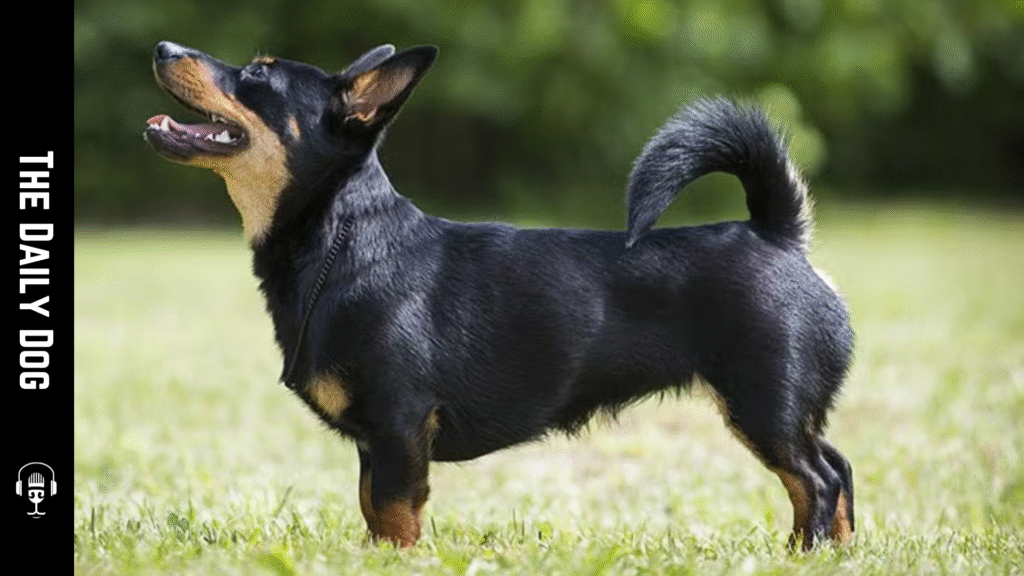The Lancashire Heeler is a lively, intelligent, and affectionate dog breed that has captured the hearts of dog lovers across the UK and beyond. Known for its distinctive appearance and spirited personality, this small herding dog makes an excellent companion for active families, singles, and anyone seeking a versatile and loyal pet. This article will explore everything you need to know about the Lancashire Heeler, including its history, temperament, care requirements, health considerations, and why it might be the perfect addition to your family.
Origins and History of the Lancashire Heeler
The Lancashire Heeler has its roots firmly planted in the historic county of Lancashire in North West England. Originally developed as a herding and farm dog, the breed’s primary role was to herd cattle and small livestock and provide farm companionship and security. Its remarkable agility, intelligence, and alertness made it an invaluable asset to farmers and herders.
The breed’s ancestors likely include the Welsh Corgi, Border Collie, and other small herding dogs that were common in the region during the 17th and 18th centuries. Over time, the Lancashire Heeler’s distinctive traits became standardized through selective breeding, leading to the modern breed recognized today.
In the early 20th century, efforts to preserve the breed gained momentum, and the Lancashire Heeler was officially recognized by the Kennel Club in the UK in 1981. Despite its relatively recent formal recognition, the breed’s history stretches back several centuries, making it rich in tradition and resilience.
Physical Characteristics and Appearance
The Lancashire Heeler is a compact, well-muscled dog that typically weighs between 13 and 15 pounds (6 and 7 kg) and stands about 10 to 12 inches (25 to 30 cm) tall at the shoulder. Its small size belies its energetic and hardy nature.
The breed’s short, dense, and weather-resistant coat suits it for outdoor work in various climates. The most common coat color is black and tan, with symmetrical and expressive markings. Some Lancashire Heelers may also have a blue and tan coloration or other variants, but the classic black and tan remains the most recognizable.
Their face is expressive, with dark, almond-shaped eyes that convey curiosity and alertness. The ears are small, erect, and triangular, giving the breed a distinctive alert expression. The tail is typically docked or natural, carried high and slightly curved, adding to their lively appearance.
Temperament and Personality Traits
One of the most endearing qualities of the Lancashire Heeler is its vibrant personality. These dogs are known for their intelligence, agility, and unwavering loyalty. They thrive on interaction and are highly trainable, making them suitable for various dog sports, obedience training, and even agility courses.
Lancashire Heelers are naturally alert and protective, often barking to alert their owners of any unusual activity or visitors. This trait makes them excellent watchdogs despite their small stature.
Despite their herding instincts, Lancashire Heelers are friendly and affectionate with their families. They tend to form strong bonds with their owners and are particularly good with children when properly socialized. Their playful and lively nature ensures they are always ready for a game or a walk.
However, they can be wary of strangers and may exhibit cautious behavior initially. Early socialization is essential to ensure they grow into confident and well-mannered adult dogs.
Key Personality Traits:
- Intelligent and quick learners
- Energetic and playful
- Loyal and affectionate
- Alert and protective
- Independent but social
Exercise and Mental Stimulation Needs
The Lancashire Heeler is a high-energy breed that requires plenty of physical and mental stimulation to stay happy and healthy. Their herding background means they naturally want to be active and enjoy tasks challenging their agility and intelligence.
A typical day should include at least 60 to 90 minutes of exercise, which can be divided into walks, playtime, and training sessions. Off-leash activities in a secure area are ideal for allowing them to burn off excess energy.
In addition to physical activity, Lancashire Heelers thrive on mental challenges. Puzzle toys, obedience training, and agility exercises are excellent ways to engage their minds. They enjoy learning new commands and tricks, making training sessions fun and beneficial.
They may become bored and develop undesirable behaviors such as excessive barking or chewing without sufficient stimulation. Therefore, owners should commit to providing a stimulating environment that caters to their active nature.
Training and Socialization Tips
Training a Lancashire Heeler requires patience, consistency, and positive reinforcement. They are intelligent and eager to please, making them relatively easy to train compared to other small breeds. However, their herding instincts can sometimes make them stubborn or independent.
Early socialization is crucial to help prevent any tendencies toward suspicion or territorial behavior. Introducing them to various people, animals, and environments from a young age will foster confidence and good manners.
Positive reinforcement methods, such as treats, praise, and play, work best. Avoid harsh corrections, as Lancashire Heelers respond poorly to punishment and can become wary or stubborn.
Obedience classes and training sessions should be short, engaging, and rewarding. Consistency and patience will yield the best results.
Grooming and Care Requirements
The Lancashire Heeler is a low-maintenance breed when it comes to grooming. Their short, dense coat requires minimal brushing—once or twice a week is sufficient to remove loose hairs and keep the coat healthy.
Regular brushing also helps distribute natural oils and keeps the skin in good condition. During shedding seasons, more frequent brushing may be needed.
Bathing should be done as needed, typically every few months, unless the dog becomes dirty or smelly. Routine ear cleaning, nail trimming, and dental care are essential to their grooming routine.
Because of their weather-resistant coat, Lancashire Heelers can enjoy outdoor activities in various climates. Still, they should be brought inside during extreme weather conditions to prevent discomfort or health issues.
Health Considerations and Common Conditions
The Lancashire Heeler is generally a healthy breed with a lifespan of around 12 to 15 years. However, like all breeds, they are prone to specific health issues that prospective owners should be aware of:
- Hip Dysplasia: A genetic condition affecting the hip joints, which can lead to arthritis and mobility issues. Regular screening and maintaining a healthy weight can help manage this condition.
- Progressive Retinal Atrophy (PRA): An inherited eye disorder leading to blindness. Regular eye examinations are recommended.
- Von Willebrand’s Disease is a blood clotting disorder that can cause excessive bleeding from minor injuries.
- Obesity: Their active nature requires a balanced diet and regular exercise to prevent weight gain.
Responsible breeding, proper veterinary care, and regular health check-ups are essential to ensure a long, healthy life for your Lancashire Heeler.
Living with a Lancashire Heeler
The Lancashire Heeler’s lively and affectionate nature makes it an excellent companion for various living situations. They are well-suited to apartments, townhouses, or houses with yards, provided they receive sufficient daily exercise.
Because of their herding instincts, they may try to herd children, other pets, or even adults, often by nipping or gentle herding behaviors. Early training and socialization can help mitigate this trait.
Their alertness and protective instincts mean they are often wary of strangers, making them good watchdogs. However, their friendly nature generally ensures they are not aggressive without reason.
Lancashire Heelers thrive on companionship and do best in environments where they are not left alone for long periods. They love being part of family activities and should be included in walks, playtime, and social outings.
Why Choose a Lancashire Heeler?
If you are an active individual or family looking for a loyal, intelligent, and energetic dog, the Lancashire Heeler fits the bill perfectly. These dogs are adaptable, hardy, and eager to please, making them suitable for various lifestyles.
Their small size and minimal grooming needs make them manageable for urban living, while their energetic nature ensures they stay happy and healthy when given sufficient activity and mental stimulation.
Moreover, their affectionate and loyal temperament means they form strong bonds with their owners, providing companionship and protection.
Final Thoughts
The Lancashire Heeler is a remarkable breed that combines an energetic and athletic spirit with a loving and loyal personality. Their rich history, distinctive appearance, and versatile nature make them an excellent choice for active families, singles, or anyone looking for a small, intelligent, lively dog.
Prospective owners should be prepared to provide regular exercise, mental stimulation, and socialization to ensure their Lancashire Heeler thrives. With proper care and attention, this breed can become a cherished family member for many years to come.
If you’re considering adding a Lancashire Heeler to your household, remember that responsible ownership, early training, and regular veterinary care are key to a happy and healthy life together. Embrace the energy and loyalty of this wonderful breed, and you’ll be rewarded with a devoted and spirited companion.










